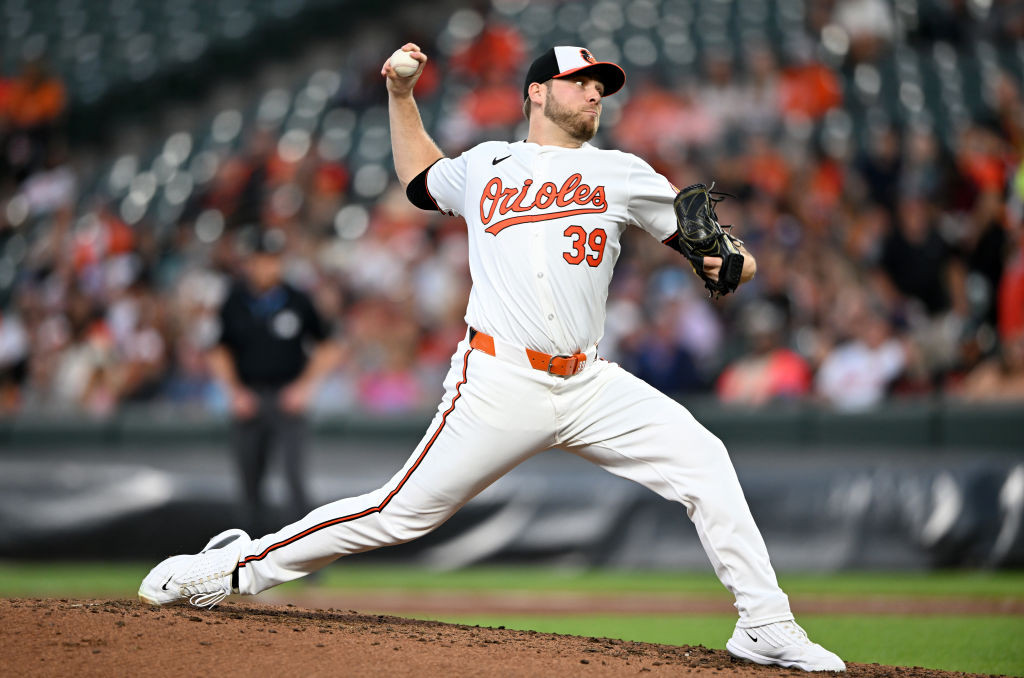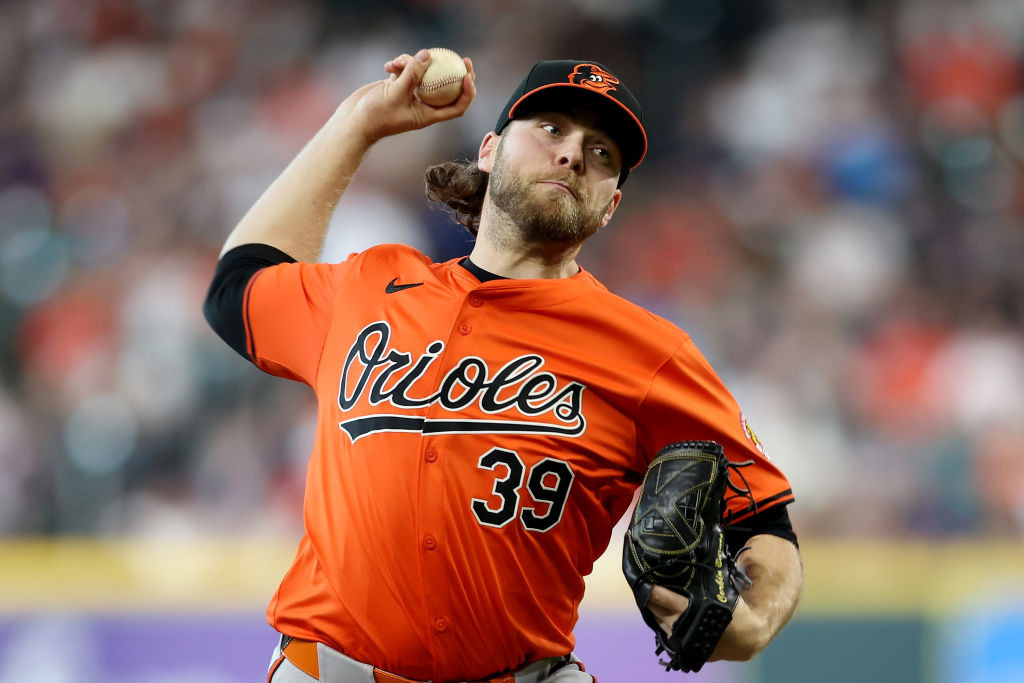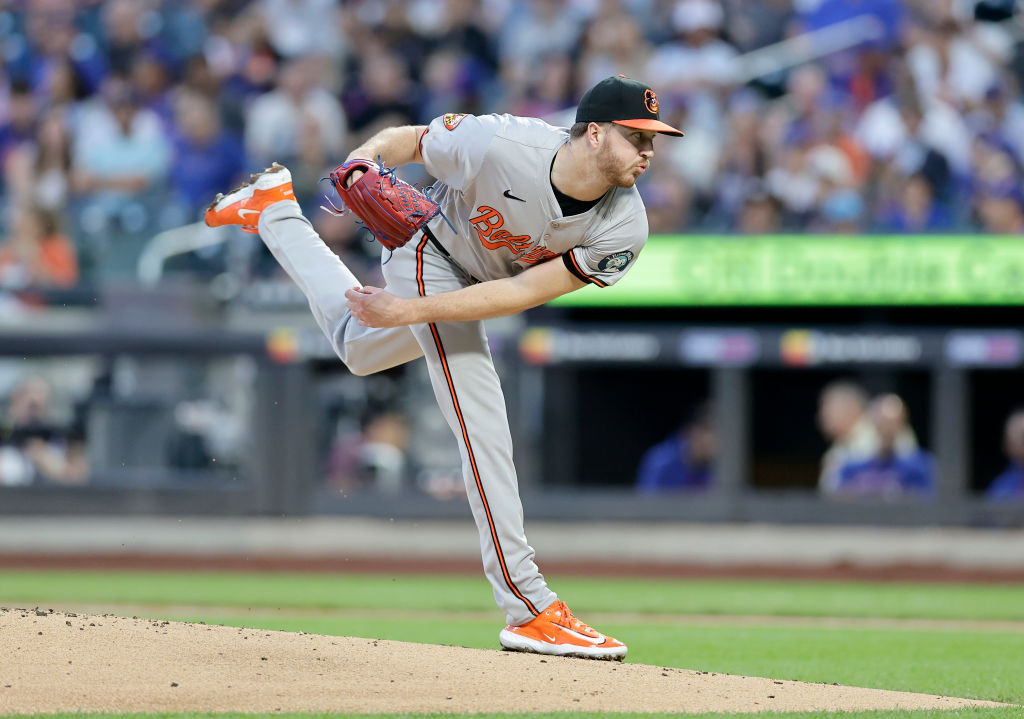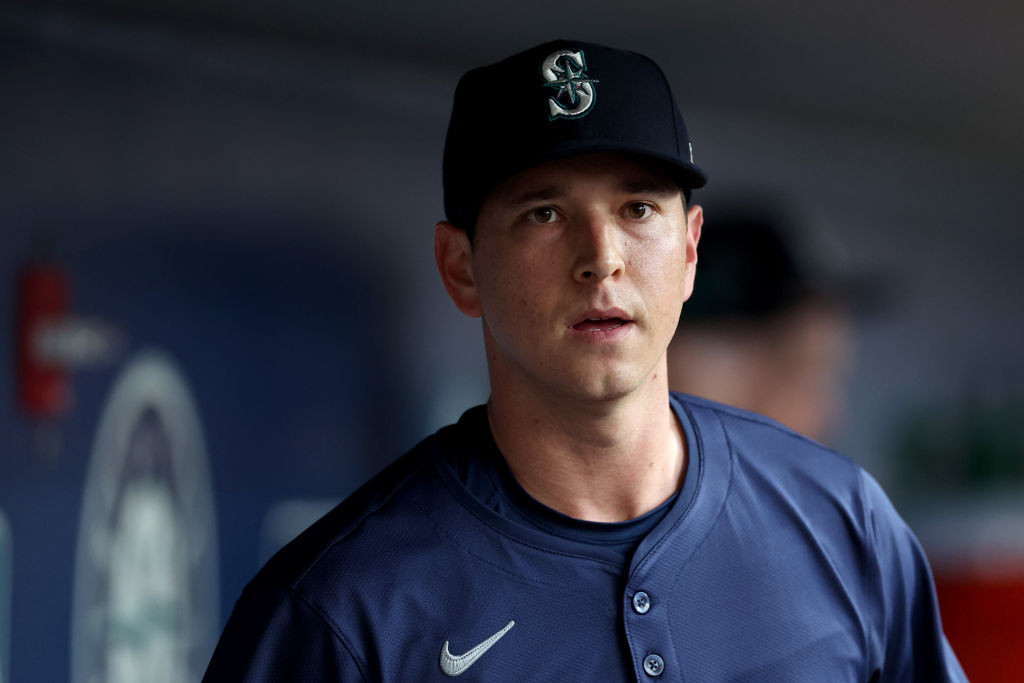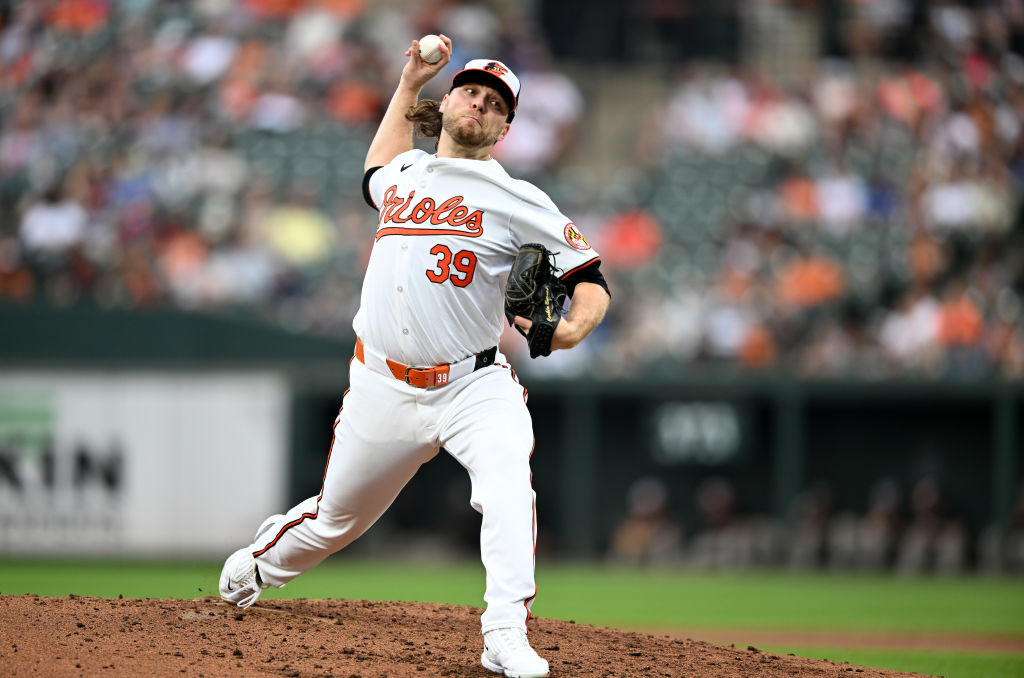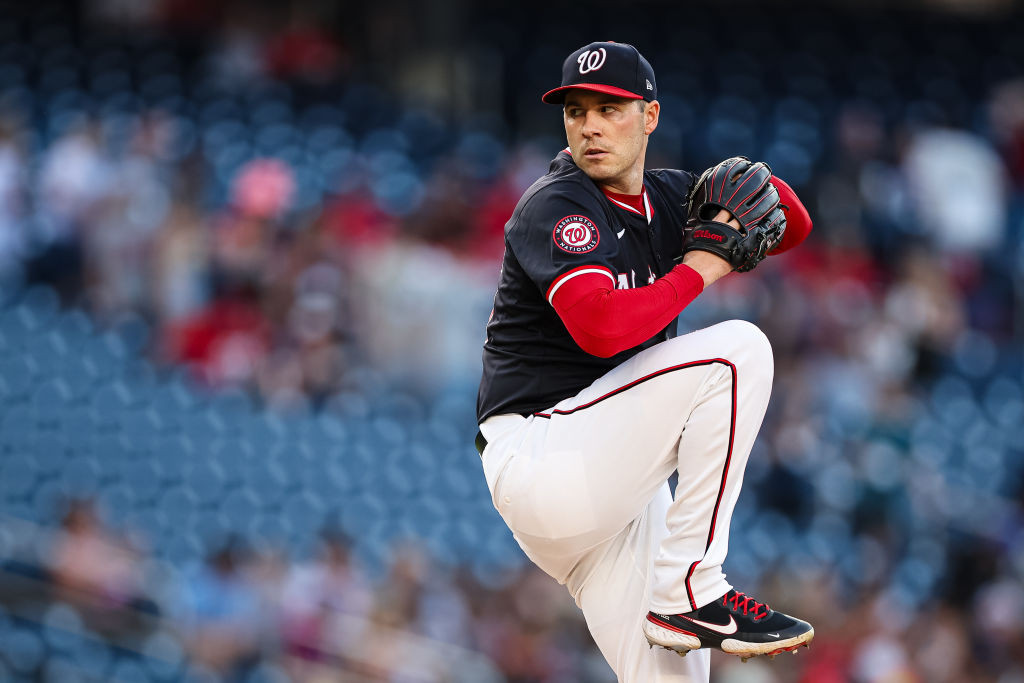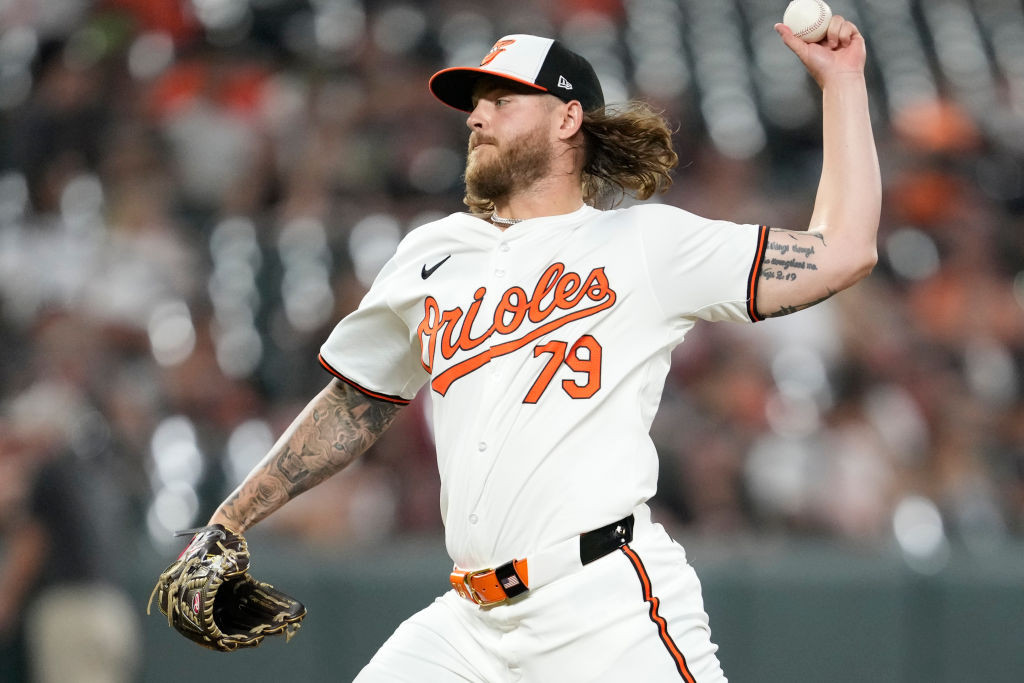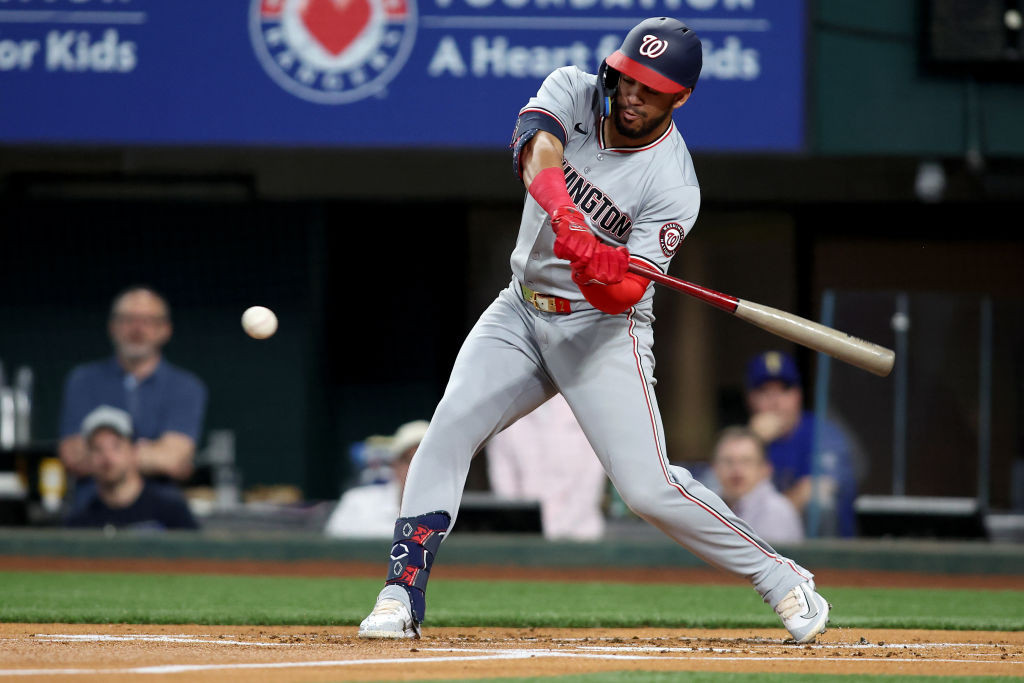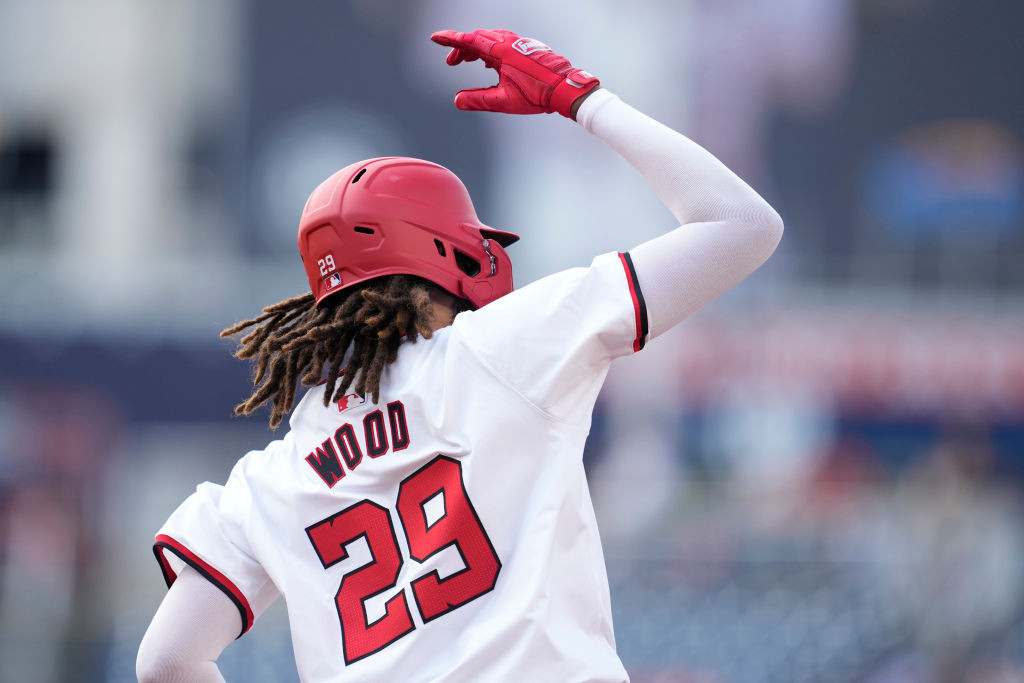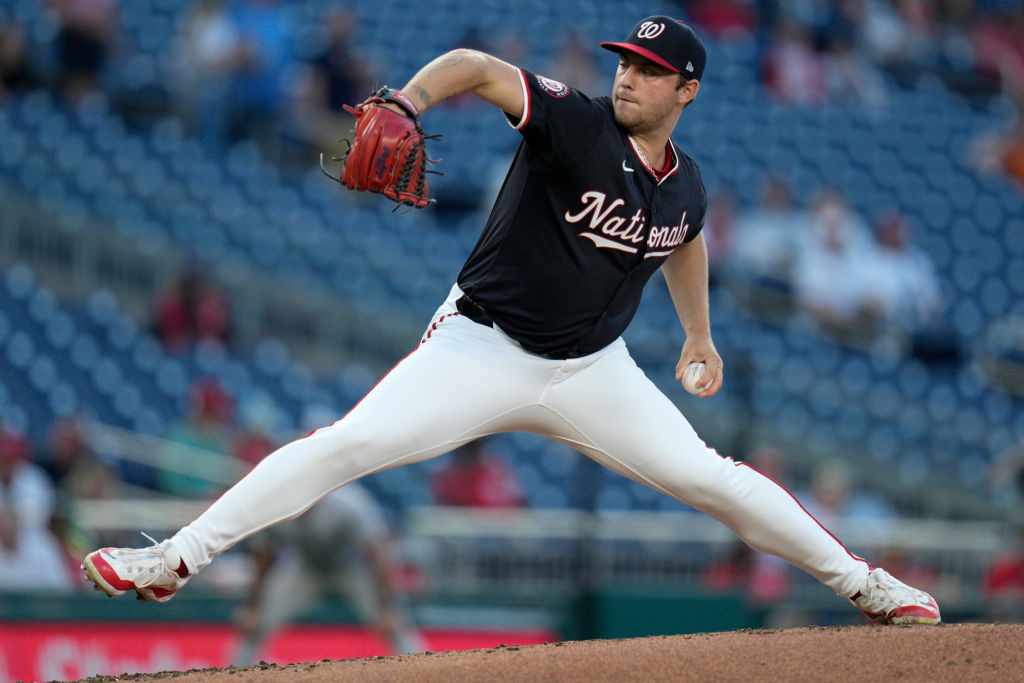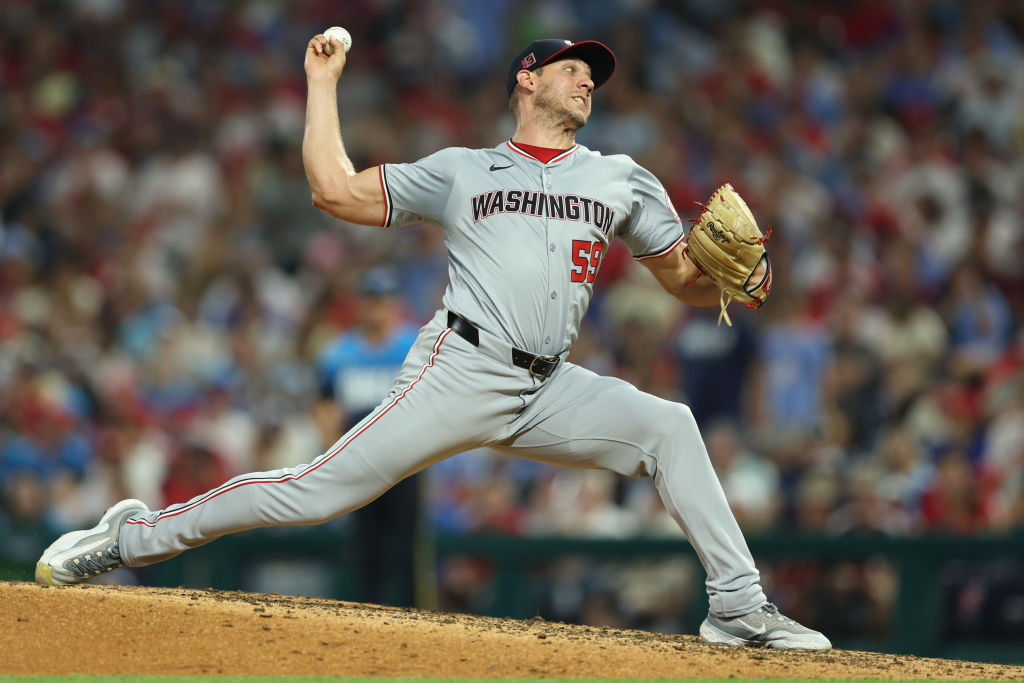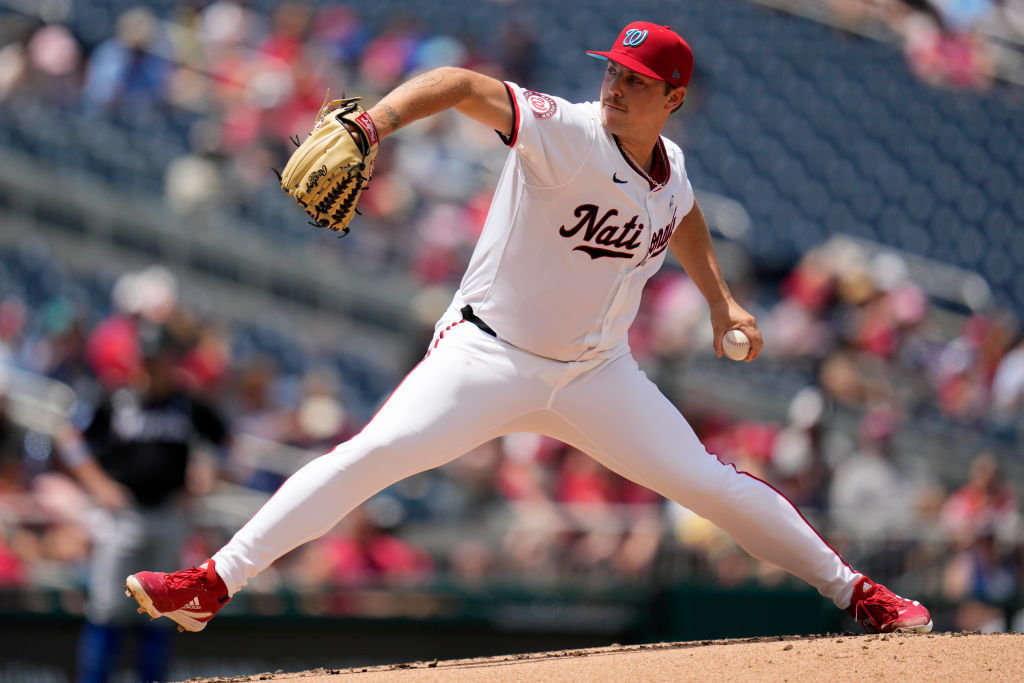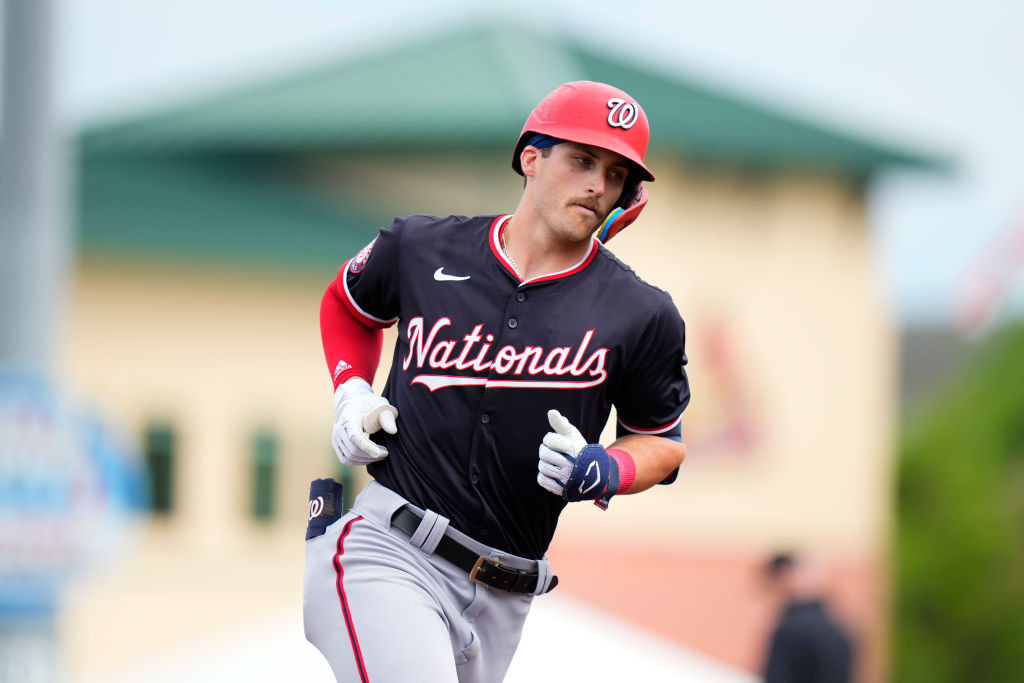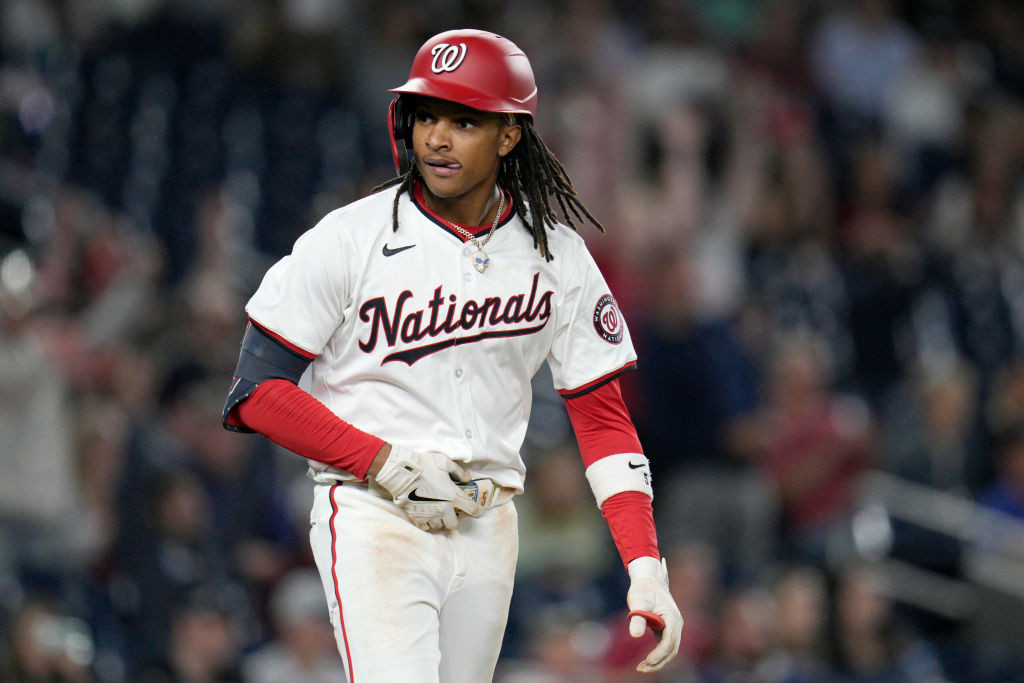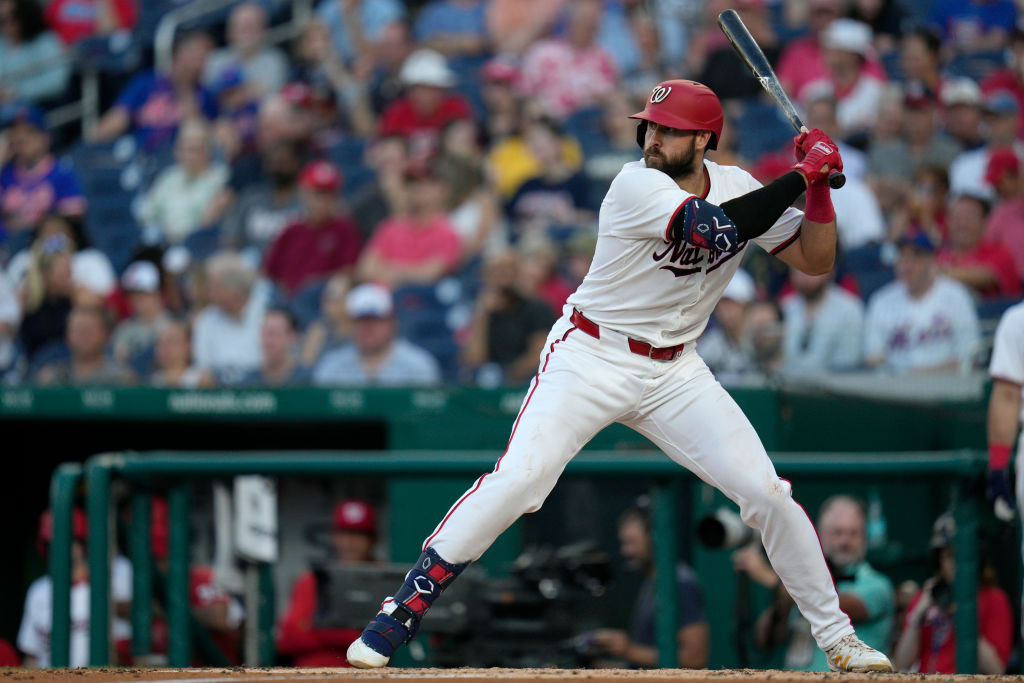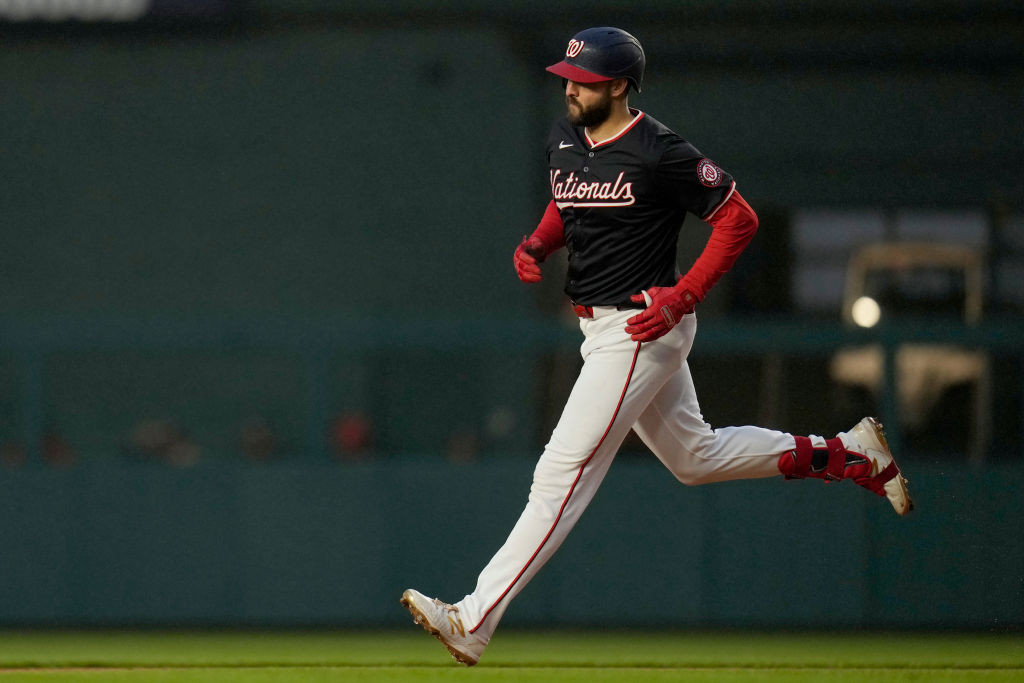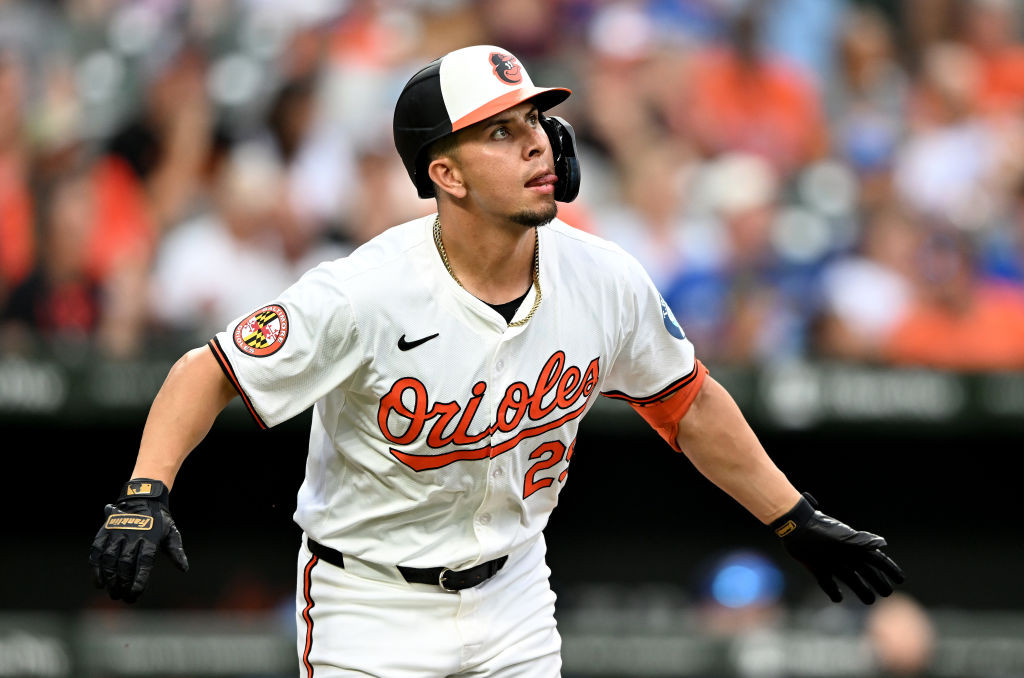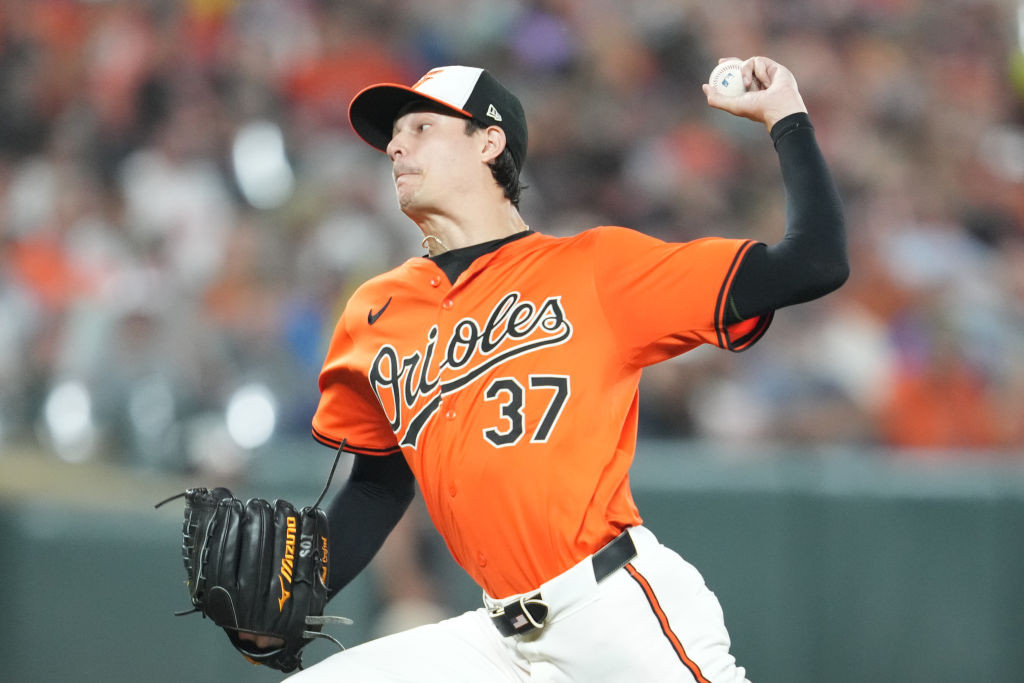Corbin Burnes shortened his hair and lengthened his start, but what happened tonight wasn’t pretty.
Burnes allowed four runs in the sixth inning and the offense ran cold again in the Orioles’ 6-0 loss to the Astros before an announced crowd of 22,212 at Camden Yards.
The Yankees lead the division by 1 ½ games, the Orioles’ largest deficit since being two back on June 25.
After surrendering a career-high eight runs and 10 hits last week, Burnes was poised to produce his 20th quality start. However, the Astros sent eight batters to the plate in the sixth, broke open the game and forced manager Brandon Hyde to dig into his bullpen after 5 2/3.
Burnes allowed six runs (five earned) and eight hits. Damage came heavy with two outs in the sixth, when Ben Gamel singled at only 77.8 mph off the bat to drive in a run, Burnes fielded Jake Meyers’ bunt and threw the ball past first base, and Shay Whitcomb delivered a two-run single.
Now an O's team that has fallen to second-place, one that lost twice via walk-off results at Citi Field, one that has lost four of six and six of 10 and that is 29-32 since June 13, goes into a demanding stretch of games.
The Orioles host first-place Houston for four at Camden Yards beginning tonight. Then the Birds fly across the country and play three in Los Angeles against the first-place Dodgers starting Tuesday night.
It's a tough seven-game run for an O's team that is 16-16 since the All-Star break and got swept three in a row at Houston in late June. The Orioles scored 11 runs in that series opener but lost 14-11 at Minute Maid Park. Then they lost 5-1 and 8-1 decisions, outscored in that series, 27-13 by the American League West leader.
With a win by the Yankees 6-0 over the Guardians today, the Orioles (74-54) are one game back in the AL East heading into tonight's game.
While O's starting pitchers have allowed two earned runs or less six times the past eight games, the Baltimore bullpen has been scored on six straight games with an ERA of 6.43 in that span. The O's pen has allowed eight homers the the last six games over 21 innings.
The lack of fresh relievers impacted starter Trevor Rogers.
The Orioles optioned Rogers early this afternoon within a bevy of roster moves that included calling up left-hander Nick Vespi and selecting right-hander Matt Bowman’s contract from Triple-A Norfolk.
Rogers’ next turn in the rotation was Sunday but the spot became listed as TBA.
“Just kind of where we are bullpen-wise,” said manager Brandon Hyde. “We feel like we needed to get some help in the bullpen, get some guys that are able to pitch tonight. Cade (Povich) is gonna throw tomorrow, so we want Trevor to stay ready. We’ll see what happens here. We just want him to stay ready and we’ll see how things shake out the next couple weeks.”
The Orioles sent outfielder Kyle Stowers and second baseman Connor Norby to the Marlins for Rogers at the trade deadline. He’s posted a 7.11 ERA and 1.842 WHIP in four starts and hasn’t gone more than five innings.
Right-handed reliever Matt Bowman, if he gets into a game with the Orioles, would be pitching for his fourth MLB team this season.
He got into five games in April with Minnesota, four with Arizona in May and one with Seattle in June.
He has actually already pitched this year at Oriole Park, throwing two scoreless on May 12 for the Diamondbacks.
Now after his transactions-filled year and season he wouldn’t mind finding a home with the team from his home state.
Bowman, 33, is 0-0 with a 5.40 ERA over 15 combined innings with a 1.200 WHIP. Since 2016 he has a career 4.22 ERA in the majors over 200 1/3 innings for six clubs.
Cedric Mullins is in center field tonight after being absent from the lineups in Queens.
Colton Cowser is playing left field and Ryan O’Hearn is in right. Anthony Santander is the designated hitter.
Adley Rutschman is batting fifth. Jackson Holliday is seventh.
Gunnar Henderson is slugging .717 in 28 games against the American League West this season.
The Orioles have homered in 16 consecutive games, tied for the third-longest streak by any team this season behind the Twins (28) and Orioles (22 straight in June) per STATS.
Not that expectations were high for Patrick Corbin when this season began, but even the least optimistic observer out there had to assume the left-hander would reach his 100th career win along the way, and probably not that far along the way.
Corbin needed only three victories to get there. And even if the Nationals’ intention was to move the long-struggling veteran to the bullpen once Cade Cavalli or Josiah Gray was healthy, he surely would’ve achieved the milestone by then.
And yet here was Corbin taking the mound this afternoon to face the Rockies, making his 26th start of the season, his win total stuck on 99 as his ERA once again approached 6.00. Cavalli and Gray remain on the injured list, as does Trevor Williams, so Corbin still isn’t in danger of losing his spot in the rotation anytime soon.
But at long last, he can breathe a sigh of relief. He has finally reached the century mark, thanks to perhaps his best start of the year.
With six innings of one-run ball and a season-high eight strikeouts, Corbin never let the Rockies get anything going at the plate. And thanks to some long-awaited run support from his teammates, he and the Nats cruised to an 8-3 victory in their series finale against Colorado.
The Orioles were short one reliever yesterday at Citi Field and apparently are making a move to correct it.
Left-hander Nick Vespi is joining the Orioles today, per sources. And there could be more roster changes coming after yesterday’s waiver claim of infielder Emmanuel Rivera.
Vespi made the Opening Day roster with Jacob Webb on the paternity list. He was optioned two days later, recalled May 22 as the 27th man in St. Louis and immediately returned to Triple-A Norfolk, recalled May 24 when Dean Kremer went on the injured list with a triceps strain, optioned three days later, recalled June 3 and optioned three days later when the Orioles selected Cade Povich’s contract, was recalled June 15 when Kyle Bradish went on the IL with a sprained ulnar collateral ligament, and was optioned again July 3 when Kremer was reinstated.
Teams can’t option a player more than five times in a season without going through the waiver process. Sending him down after the 27th-man designation doesn’t count against the total.
Vespi has appeared in 10 games and allowed four runs and 10 hits in 11 1/3 innings. Three runs were surrendered over 1 1/3 innings in his last major league outing on June 30 against the Rangers.
Upon returning to the dugout following his three-run homer Wednesday night, Luis García Jr. approached his manager with a wide smile.
“Before the at-bat, he had mentioned to me to look for a ball up,” García said, via interpreter Octavio Martinez. “And the pitch that I hit out was actually up. So I came back and told him: ‘It was right where you said.’”
It was both the latest example of García’s breakthrough season on the field and the relationship he and Davey Martinez have developed over years, helping make this breakthrough season possible.
No player on the Nationals roster received as much criticism from Martinez this spring as García, who after a disappointing 2023 was told it was time to either step up or risk losing his job. At the time, there was reasoned speculation Trey Lipscomb might soon supplant him at second base.
Five months later, García has a stranglehold on the job and has shown no signs of letting it go. The 24-year-old enters today’s series finale against the Rockies with a .294 batting average (sixth in the National League), 22 doubles, 15 homers, 62 RBIs, 19 stolen bases and a .794 OPS that leads all eligible regulars on the Nats.
It’s another surprisingly gorgeous August day here in the nation’s capital, where the home team has a shot at a series win if it can beat the Rockies again this afternoon. The Nationals won Wednesday night in convincing fashion, thanks to an effective and efficient start from Mitchell Parker and a consistent offensive attack highlighted by Luis García Jr.’s three-run homer.
Can Patrick Corbin duplicate Parker’s seven innings of one-run ball? That might be a bit too much to ask out of the veteran left-hander, who for the sixth straight start will be taking the mound in search of his 100th career win. (He entered the season with 97, by the way.) Corbin did enjoy back-to-back quality starts a month ago against the Reds and Padres. In four starts since then, he sports a 10.38 ERA, with 21 runs allowed in only 17 1/3 innings.
The Nats did a nice job at the plate Wednesday night against Rockies right-hander Tanner Gordon. They’ll try to keep that up today against right-hander Cal Quantrill, who did toss a quality start against them two months ago at Coors Field. Quantrill has struggled since then, though, with a 7.23 ERA over his last eight games, with 10 homers surrendered in that time.
WASHINGTON NATIONALS vs. COLORADO ROCKIES
Where: Nationals Park
Gametime: 1:05 p.m. EDT
TV: MASN, MLB.tv
Radio: 106.7 FM, 88.7 FM (Spanish), MLB.com
Weather: Mostly sunny, 77 degrees, wind 7 mph left field to right field
NATIONALS
RF Alex Call
SS CJ Abrams
LF James Wood
C Keibert Ruiz
2B Luis García Jr.
3B José Tena
DH Juan Yepez
1B Joey Gallo
CF Jacob Young
Mitchell Parker has endured through three disastrous starts in the last five weeks, once failing to get out of the first inning, once failing to get out of the third inning and most recently getting torched by the Phillies for nine runs.
Those outings could’ve completely spoiled the left-hander’s rookie season, left him spiraling out of control or perhaps even facing a demotion to Triple-A Rochester. Instead, Parker has found a way to shrug them off and right his ship before it goes too wayward.
And with seven sparkling innings tonight to lead the Nationals to an easy 6-1 victory over the Rockies, he enjoyed perhaps his best display of resiliency yet.
"This is who we saw earlier," manager Davey Martinez said. "This is who he can be."
Parker cruised through Colorado’s lineup tonight, needing only 83 pitches to complete seven innings for the fourth time in his 23 big league starts. The 24-year-old remains a work-in-progress, and his 4.26 ERA suggests there’s still plenty of room for improvement (and especially consistency).
When the Nationals traded Hunter Harvey to the Royals, there was concern about replacing such an important member of the bullpen. When they traded Dylan Floro to the Diamondbacks, the challenge of getting the ball to closer Kyle Finnegan became even more daunting. And when Derek Law landed on the injured list, the situation looked downright bleak.
Now consider how well the Nats bullpen has actually performed despite those seemingly killer losses: Over the last two weeks, the remaining group owns a 1.95 ERA, tops in the majors.
It’s true. The team might be 5-9 during that span, but rarely has it been the bullpen’s fault, with only two of the losses charged to relievers. All this in spite of the fact manager Davey Martinez has been forced to adjust roles on the fly, often using inexperienced arms in situations of consequence out of necessity.
“All of these guys, they’ve just got to be ready,” Martinez said. “Mainly right now, it’s matchups and how we see fit.”
For much of the season’s first half, Martinez’s mid-to-late-game strategy was fairly simple. Finnegan was the closer, with Harvey the setup man. Floro usually pitched the seventh inning, unless the opponents had several left-handed hitters due up, in which case Robert Garcia would get the assignment. Law would be used prior to that point, often entering in the sixth or even fifth inning if needed.
The Nationals have scored 14 runs over their last six games. It will not surprise you to learn they’ve gone 1-5 in those games. Scoring runs is good. Not scoring runs is bad. It would really help their chances tonight if they could score some runs.
The Nats will be facing a Rockies starter who has made only six big league appearances before, four of them losses, none of them wins. Right-hander Tanner Gordon is 0-4 with a 7.00 ERA, having allowed 40 batters to reach base in 27 innings, giving up seven homers in the process. A sixth-round pick of the Braves in the 2019 Draft, he throws a low-90s fastball, a slider and a changeup. This is someone the Nationals should believe they can hit tonight.
Mitchell Parker, meanwhile, starts for the home team. The rookie left-hander put together back-to-back quality starts against the Brewers and Angels, then got absolutely roughed up by the Phillies for nine runs in three-plus innings last week. That one start raised his ERA from 3.83 to 4.44. He really needs to get himself back on track tonight.
WASHINGTON NATIONALS vs. COLORADO ROCKIES
Where: Nationals Park
Gametime: 6:45 p.m. EDT
TV: MASN, MLB.tv
Radio: 106.7 FM, 88.7 FM (Spanish), MLB.com
Weather: Mostly clear, 73 degrees, wind 9 mph left field to right field
NATIONALS
RF Alex Call
SS CJ Abrams
LF James Wood
C Keibert Ruiz
2B Luis García Jr.
3B José Tena
DH Andrés Chaparro
1B Joey Gallo
CF Jacob Young
Watching the Nationals slog their way through Tuesday night’s 3-1 loss to the Rockies, and contemplating a lineup that has been held to a grand total of 14 runs over its last six games (five of them losses), it was hard not to look forward and ask the question surely on everyone’s minds right now.
When is the rest of the calvary coming?
The Nats have been fielding a lineup for a while that does feature several potential young building blocks: James Wood, CJ Abrams, Luis Garcia Jr., Keibert Ruiz, Jacob Young. The rest of the lineup, though, continues to feature placeholders, some of whom could theoretically be part of the long-term plan, though the odds are still against that actually coming to fruition.
So it’s not wrong to end each night looking not only at the major league box score, but at the Triple-A Rochester box score to check in on the big-name prospects who are still waiting for the call. Most notably, Dylan Crews and Brady House.
Crews is one of the top rated prospects in the sport, the second overall pick in last summer’s draft considered one of the surest bets in recent history. While the two players drafted directly before (Paul Skenes) and after (Wyatt Langford) have been big leaguers for months now, Crews remains a minor leaguer. One with good-but-not-great numbers.
Not that the Nationals have fielded an imposing lineup often this season, but the group Davey Martinez currently has at his disposal isn’t exactly going to leave opposing pitchers quaking in their boots.
Tonight’s batting order against the Rockies included a leadoff hitter with a career .696 OPS, a 7-8-9 triumvirate with a combined four homers this year and a No. 3 hitter who has been in the majors for all of one week and wasn’t a highly rated prospect at the time of his promotion.
So, as uninspired as the Nats’ 3-1 loss this evening was, it could not have taken very many by surprise. What, exactly, was this particular lineup expected to produce beyond CJ Abrams’ solo homer in the sixth?
The Nationals didn’t produce anything else of consequence against Rockies starter Austin Gomber or the two relievers who followed. And in the process, they wasted another solid outing by DJ Herz, who overcame an unsightly top of the first to actually put together one of his best starts in a while.
"We try to get guys in a position for them to be successful, because they've done it in the minor leagues," said Martinez, who had Alex Call leading off, Andrés Chaparro batting third and a 7-8-9 of Riley Adams, José Tena and Jacob Young. "Up here, it's a little different. I think it's more or less trying to get experience on the pitcher, the guys they're facing. Perfect example today: This guy threw three breaking balls in a row. A lot of guys didn't think he would do it, when a lot of times he did do it. ...
It’s been more than two months since Joey Gallo last played for the Nationals, a significant hamstring strain having brought his season to an immediate halt on July 11 in Detroit. The team’s lineup that evening included a host of names no longer affiliated with the organization: Lane Thomas, Jesse Winker, Eddie Rosario, Nick Senzel.
Finally activated off the 10-day injured list today, Gallo is healthy but not in the Nats lineup for tonight’s series opener against the Rockies. The lineup instead includes a host of names playing at Triple-A two months ago: James Wood, Juan Yepez, Alex Call, Andrés Chaparro, José Tena.
“It’s funny, because when I was down there, a lot of these guys I met down there. And now they’re up here,” Gallo said “I actually know everybody really, really well. I don’t know if it’s a good thing that I know everybody, because I was hurt. But it’s cool. It’s a new clubhouse, but it’s the guys I already knew and was hanging out with down there.”
Gallo spent the last two weeks at Rochester on an extended rehab assignment, during which he hit three homers, drove in eight runs, walked 11 times, struck out 12 times and saw action both at first base and in right field.
The extra work, he believes, was necessary after the long layoff.
The Orioles have made the following roster moves:
- Recalled LHP Cade Povich from Triple-A Norfolk.
- Recalled RHP Dillon Tate from Triple-A Norfolk.
- Placed LHP Keegan Akin on the Paternity List.
- Placed RHP Zach Eflin on the 15-day Injured List (right shoulder inflammation), retroactive to August 17.
The last week was not especially kind to the Nationals, who went 2-4 on their road trip to Baltimore and Philadelphia, at times looking overmatched by two of the best teams in baseball. The good news: They’re back home and facing a team with a worse record in the Rockies. At 46-79, Colorado is tied with Miami for the worst record in the National League, with only the wretched White Sox even worse than them across the majors.
The Nats still need to play well the next three days, of course, and they’ll hope DJ Herz can keep up what he’s been doing the last few weeks on the mound. After a midseason hiccup, Herz has gotten back on track, with a 3.04 ERA over his last five starts, including a quality start last week at Camden Yards. He struggled a bit at Coors Field earlier this summer, though, lasting just 3 2/3 innings in the thin mountain air.
The Nationals did not see Austin Gomber in that late-June series in Colorado. The left-hander enters with a 4.82 ERA and 24 homers allowed in 125 innings but did produce quality starts in two of his last three outings. The Nats have a big bat back in the lineup, with Joey Gallo finally activated off the 10-day injured list after a two-week rehab stint at Triple-A Rochester. He replaces Travis Blankenhorn, who was optioned to Triple-A.
The Nats also activated Robert Garcia off the bereavement list and optioned Orlando Ribalta to Rochester, giving them three lefties in the bullpen for the first time this season.
WASHINGTON NATIONALS vs. COLORADO ROCKIES
Where: Nationals Park
Gametime: 6:45 p.m. EDT
TV: MASN2, MLB.tv
Radio: 106.7 FM, 88.7 FM (Spanish), MLB.com
Weather: Clear, 73 degrees, wind 11 mph in from left field
The Washington Nationals made the following roster moves on Tuesday. Nationals President of Baseball Operations and General Manager Mike Rizzo made the announcement.
- Returned from rehabilitation assignment and reinstated first baseman/outfielder Joey Gallo from the 10-day Injured List
- Reinstated left-handed pitcher Robert Garcia from the Bereavement List
- Optioned outfielder/designated hitter Travis Blankenhorn to Triple-A Rochester
- Optioned right-handed pitcher Orlando Ribalta to Triple-A Rochester
Gallo, 30, returns to the active roster after being placed on the Injured list with a left hamstring strain on June 12. He appeared in 11 games for the Red Wings while on rehab assignment, going 7-for-34 (.206) with three homers, eight RBI, 11 walks and nine runs scored along the way. He appeared in right field (4 G), as designated hitter (5 G) and at first base (1 G).
Garcia, 28, ranks sixth among Major League left-handed relievers with 11.60 strikeouts per nine innings this season. He’s appeared in a career-high 56 games and has recorded a career-high 11 holds in 2024.
Blankenhorn, 28, has hit .129 (4-for-31) with a double, five RBI, one walk and two runs scored in 13 games with the Nationals this season.
Ribalta, 26, pitched in two games out of Washington’s bullpen. He made his Major League debut on Aug. 13 at Baltimore.
When you ask Orioles manager Brandon Hyde how much he appreciates Ramón Urías for his dependability at a variety of times in a variety of roles this season, he reminds everyone this is not new.
“The last few years,” said Hyde.
“Ramón is the same guy, every single day," he said. "Whether he is playing or not playing. Whether he hasn’t played in three or four days or been in the lineup. He comes to the park super consistent. He’s always ready. Makes his defense important and gives you the best AB he’s got. He’s got sneaky power and loves to be out there.
“It’s important right now. Anything we can add to the bottom of the order and wrap that thing around to the top of the order. Ramón has always been a super, steady player for us.”
When the Orioles optioned Coby Mayo back to Triple-A Thursday, that put Urías back in the lineup at third base, the position where he won a Gold Glove in 2022.
Orioles manager Brandon Hyde was asked before tonight’s game whether rookie Cade Povich could stay in the rotation or perhaps move to the bullpen.
“I think we’ve got 40 games to go, and it’s 40 of day-to-day right now,” Hyde said. “Just kind of never know. And we’ve got rosters expanding. A lot of things can happen.”
A quick return to Triple-A Norfolk also was possible, or more like probable with no plans for a six-man setup. How much of the decision was really in the rookie’s hands?
The left one gave the Orioles lots to ponder.
Recalled earlier today to make his ninth major league start, Povich retired 15 of the first 17 batters and carried a shutout into the sixth inning before allowing a run. He lasted a career-high 6 1/3 in the Orioles’ 5-1 loss to the Red Sox before an announced crowd of 38,921 at Camden Yards.

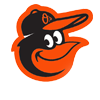
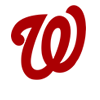

-1745819772711.png)
